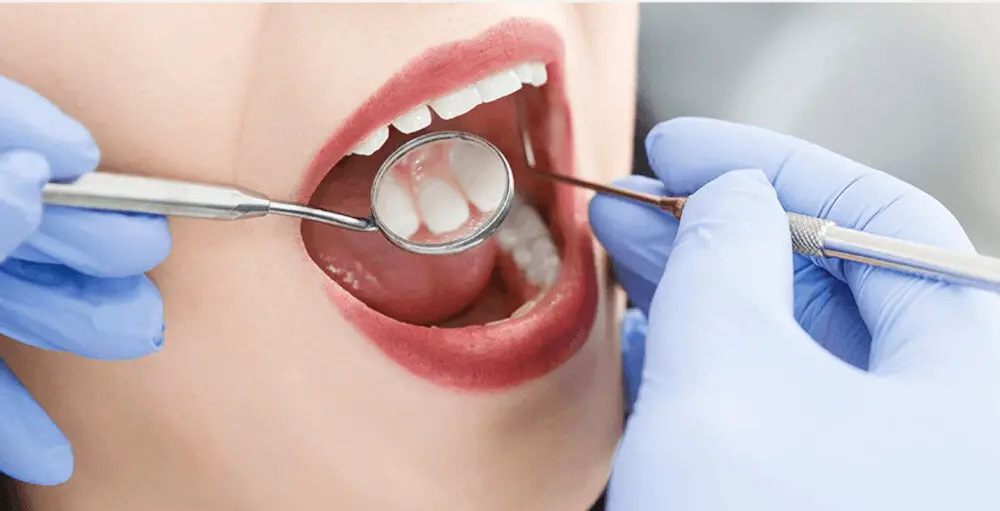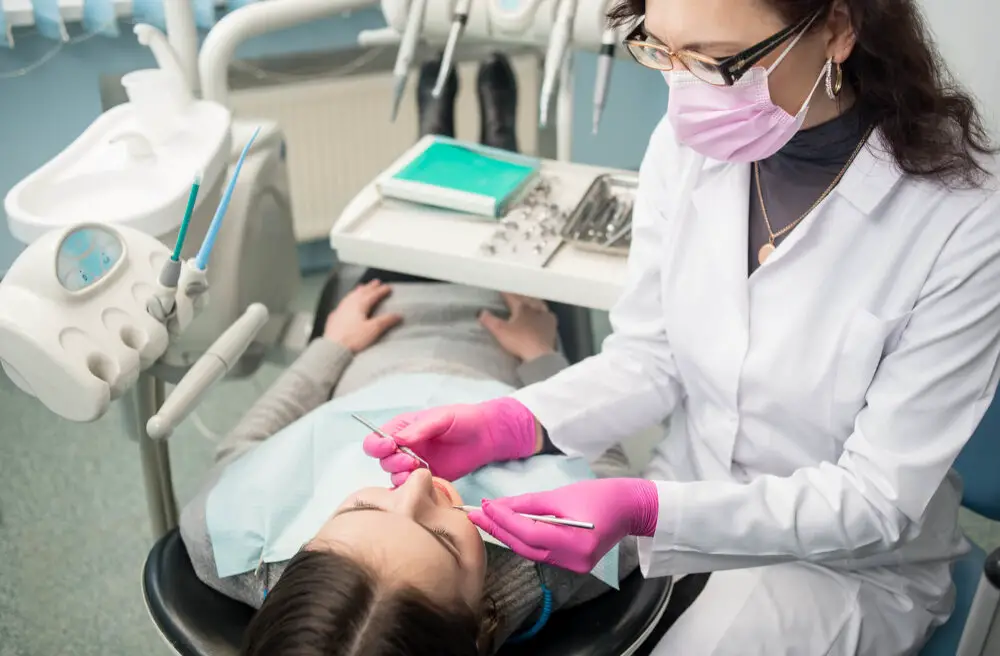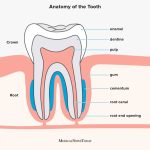Wisdom Teeth Removal: When to Remove Gauze for Faster Healing

Wisdom teeth, also known as third molars, are the last set of teeth to emerge in the back of the mouth. They usually appear between the ages of 17 to 25. Some people may not have enough space in their mouth for these teeth to grow properly, leading to pain, infection, and other dental problems. In such cases, wisdom teeth removal may be necessary. The procedure involves making an incision in the gum tissue, removing the tooth, and stitching the wound. After the surgery, the dentist or oral surgeon will place gauze over the extraction site to control bleeding and promote healing. However, many patients are unsure of when to remove the gauze for the best results. In this article, we will explore the timeline for gauze removal and other tips for faster healing after wisdom teeth extraction. The first few days after wisdom teeth removal are crucial for the healing process. Patients should rest and avoid strenuous activities, such as exercise or heavy lifting. They should also follow the aftercare instructions provided by their dentist or oral surgeon. This includes applying ice packs to the cheeks to reduce swelling, taking pain medication as prescribed, and eating only soft foods that do not require much chewing. One of the most important aspects of aftercare is knowing when to remove the gauze placed over the extraction site. Removing the gauze too soon can cause bleeding to start again, while leaving it in for too long can delay healing and increase the risk of infection. Therefore, it is essential to follow the recommended timeline for gauze removal. By doing so, patients can ensure a smooth and speedy recovery after wisdom teeth removal.
Wisdom teeth removal is a surgical procedure that involves the extraction of the third molars located at the back of the mouth. These teeth are known to cause discomfort and pain due to their late eruption and limited space in the mouth. The procedure is usually performed under local or general anesthesia and can take up to an hour. After the surgery, patients are advised to rest and avoid strenuous activities for a few days. Painkillers and antibiotics may be prescribed to manage pain and prevent infection. The use of gauze is also recommended to control bleeding and promote faster healing. It is essential to follow the post-operative instructions provided by the dentist or oral surgeon to ensure a smooth and successful recovery.
Proper aftercare is essential after wisdom teeth removal to ensure a fast and healthy recovery. It is crucial to follow the post-operative instructions provided by the dentist or oral surgeon to avoid complications such as infection, excessive bleeding, and dry socket. Patients should start by removing the gauze as instructed by their dentist, and then continue to take prescribed pain medications and antibiotics as directed. It is also essential to avoid smoking, using straws, and consuming solid foods until the gums have fully healed. Proper aftercare can help minimize discomfort and swelling and promote faster healing, allowing patients to return to their normal activities sooner.
What is Gauze and Why is it Used?

Gauze is a thin, breathable, and absorbent fabric that is commonly used in the medical field. It is made from cotton or a blend of cotton and synthetic fibers, and it is available in a variety of sizes and shapes. Gauze is used for a wide range of medical procedures, including wound care, surgical dressings, and dental procedures. When it comes to wisdom teeth removal, gauze is used to control bleeding and promote healing. After the procedure, a piece of gauze is placed over the extraction site to absorb any blood and allow a clot to form. This clot is essential for the healing process, and it helps to protect the underlying bone and tissue. Gauze is typically left in place for a few hours after the procedure, and patients are advised to avoid disturbing the area by rinsing vigorously or spitting. Gauze is an essential component of the post-operative care process, and it helps to promote faster healing after wisdom teeth removal. It is designed to provide a barrier between the extraction site and the outside environment, which helps to prevent infection and other complications. Gauze is also used to control bleeding, which is common after dental procedures. By applying gentle pressure to the extraction site, gauze helps to encourage the formation of a clot and prevent excessive bleeding. Overall, gauze is a simple but effective tool that plays a critical role in the healing process after wisdom teeth removal. By following the instructions provided by your dentist or oral surgeon, you can ensure that your recovery is as smooth and comfortable as possible.
Gauze is a thin, breathable fabric that is commonly used in medical procedures. It is made from cotton or a blend of cotton and synthetic fibers, which makes it absorbent and ideal for cleaning wounds or applying pressure to stop bleeding. Gauze is available in different sizes and shapes, such as squares or rolls. It can be used alone or combined with other materials to create dressings or bandages. In dentistry, gauze is often used to control bleeding after oral surgeries, such as wisdom teeth removal. It is placed over the surgical site and held in place with gentle pressure until the bleeding stops. Removing gauze too soon can disrupt the blood clot and delay healing, so it is important to follow the dentist’s instructions on when to remove it.
Gauze is a common material used in dental procedures, particularly during wisdom teeth removal. Its purpose is to control bleeding and promote faster healing. Gauze works by applying pressure to the extraction site, which helps to form a clot that stops bleeding. The pressure also helps to prevent food particles and bacteria from entering the wound, which can cause infection. Additionally, the gauze provides a barrier that protects the sensitive tissue while it heals. It is important to follow the dentist’s instructions on when to remove gauze to ensure proper healing and minimize the risk of complications.
It is crucial to follow your dentist’s instructions for gauze use after wisdom teeth removal to ensure faster healing. Gauze helps to control bleeding, which is common after the extraction procedure. Improper use of gauze can lead to further bleeding and increase the risk of infection. It is essential to change the gauze every 30 to 45 minutes as instructed by your dentist. Leaving gauze in your mouth for too long can cause a buildup of bacteria and hinder the healing process. Consistent and proper use of gauze can help to reduce discomfort, promote healing, and prevent complications after wisdom teeth removal. Therefore, it is essential to adhere to your dentist’s instructions for gauze use to ensure a speedy recovery.
How Long Should Gauze Stay in Place?

After having wisdom teeth removed, it is common for the dentist or oral surgeon to place gauze over the extraction site to control bleeding and promote clotting. The length of time that the gauze should stay in place will vary depending on the individual and the extent of the procedure. However, as a general rule of thumb, gauze should be left in place for about 45 minutes to an hour after the procedure. It is important not to leave the gauze in place for too long, as this can lead to complications such as infection or the formation of a dry socket. However, it is also important not to remove the gauze too soon, as this can cause bleeding to resume. The best approach is to follow the instructions given by the dentist or oral surgeon closely and to contact them if there are any concerns or questions about how long the gauze should stay in place. By properly managing the gauze after wisdom teeth removal, patients can help promote faster healing and reduce the risk of complications.
After a wisdom tooth extraction, the gauze is placed over the extraction site to help control bleeding and aid in the formation of a blood clot. The gauze should be left in place for at least 30 minutes to allow the blood clot to form properly. After the initial 30 minutes, the gauze should be changed every 45-60 minutes or as needed to control bleeding. It is important to follow the dentist’s instructions regarding the duration of time the gauze should be left in place as leaving it in for too long can cause an unpleasant taste and odor, and increase the risk of infection. Additionally, it is important not to disturb the blood clot by rinsing, spitting, or smoking during the first 24 hours after the procedure.
There are several factors that can influence how long gauze needs to stay in place after wisdom teeth removal. Firstly, the amount and frequency of bleeding is a crucial factor to consider. If there is significant bleeding, the gauze needs to be changed more frequently and for a longer period to prevent excessive blood loss. Secondly, the type of procedure and the number of teeth extracted can affect how long the gauze needs to stay in place. More complex procedures may require longer gauze placement to prevent infection or complications. Thirdly, individual healing rates and medical conditions such as diabetes or blood clotting disorders can impact the duration of gauze placement. Finally, following the dentist’s post-operative instructions is essential to ensure proper healing and minimize the risk of infection or complications.
Leaving gauze in place for too long after wisdom teeth removal can pose several risks to the patient. Firstly, it can impede the healing process by trapping bacteria and food particles in the extraction site, leading to infection and delayed healing. Additionally, the prolonged pressure on the extraction site can cause pain, swelling, and discomfort, which can further prolong the recovery time. Furthermore, the gauze may adhere to the wound, causing further trauma when removed, or it may even dislodge the blood clot, leading to a condition called dry socket, which can be extremely painful. Therefore, it is crucial to follow the dentist’s instructions carefully regarding the duration of gauze placement to ensure a smooth and speedy recovery.
Signs That Gauze Can Be Removed

After wisdom teeth removal, gauze is often placed over the extraction site to control bleeding and aid in the healing process. However, it is important to know when to remove the gauze to ensure proper healing and avoid complications. There are several signs that indicate it is time to remove the gauze. Firstly, the amount of bleeding should decrease significantly. Initially, some bleeding is expected after the procedure, but if the bleeding continues to be heavy or does not subside after a few hours, the gauze should not be removed. Once the bleeding has slowed down and become more controlled, it is safe to remove the gauze. Secondly, the gauze should be moist but not saturated with blood. If the gauze is soaked with blood, it should be replaced with a fresh one and left in place for a little longer before attempting to remove it. When the gauze is moist but not overly saturated, it is an indication that the bleeding has slowed down and the gauze can be removed.
After wisdom teeth extraction, gauze is placed over the surgical site to control bleeding and promote healing. However, it is important to remove the gauze at the appropriate time to avoid complications. Signs that indicate gauze can be removed include a decrease in bleeding, a change in color of the gauze from bright red to pale pink, and the absence of blood on the gauze when it is changed. Additionally, if the gauze feels loose or uncomfortable, it may be time to remove it. It is crucial to follow post-operative instructions from your dentist or oral surgeon to ensure proper healing and recovery after wisdom teeth removal.
Monitoring the healing process after wisdom teeth removal is crucial as it ensures that the recovery process is on track and any complications are detected early. It also helps in determining if any additional treatment or medication is required. Proper monitoring involves keeping an eye on the swelling, bleeding, pain, and if there is any sign of infection. The dentist will advise on how to care for the wound, including when to remove the gauze, and how to keep the area clean to prevent infection. Regular check-ups should be scheduled to ensure that the healing is progressing as expected. Failure to monitor the healing process can lead to prolonged recovery time, pain, and even more severe complications that may require further medical attention. Therefore, it is vital to follow the dentist’s instructions and monitor the healing process closely to ensure a smooth and speedy recovery.
If you have concerns after your wisdom teeth removal surgery, it’s important to seek medical attention promptly to ensure proper healing. While some discomfort and bleeding are normal, excessive bleeding or pain can indicate a complication that requires attention. Additionally, if you experience signs of infection such as fever, swelling, or pus discharge, it’s important to seek medical attention immediately. Delaying treatment can lead to further complications and prolong your recovery time. Don’t hesitate to contact your dentist or oral surgeon if you have any concerns or questions about your recovery.
Tips for Faster Healing After Gauze Removal

Wisdom teeth removal is a common dental procedure that requires the use of gauze to control bleeding and promote faster healing. After the procedure, it is essential to follow the dentist’s instructions carefully to avoid any complications. Once the gauze is removed, there are a few tips that may help speed up the healing process. Firstly, it is crucial to avoid rinsing or spitting for the first 24 hours to prevent dislodging the blood clot and causing bleeding. Instead, gently dab the area with a clean cloth or gauze to remove any excess blood or saliva. After the first 24 hours, a saltwater rinse may be recommended to help keep the area clean and promote healing. Another tip for faster healing after gauze removal is to avoid smoking, as it can delay the healing process and increase the risk of complications. Smoking can cause dry socket, a painful condition where the blood clot is dislodged, leaving the bone exposed to air and food particles. It is also essential to avoid hard, crunchy, or sticky foods that may irritate the area or get stuck in the extraction site. Instead, opt for soft, easy-to-chew foods such as soup, yogurt, or mashed potatoes. Lastly, it is essential to follow the dentist’s instructions for pain management and take any prescribed medication as directed to reduce pain and inflammation. By following these tips, patients can promote faster healing after gauze removal and ensure a smooth recovery from wisdom teeth removal.
After the gauze is removed, patients can take a number of steps to promote faster healing. First, it is important to avoid smoking or using tobacco products, as these can slow down the healing process. Patients should also avoid drinking through a straw or eating hard, crunchy, or spicy foods for the first few days after gauze removal. It is important to keep the mouth clean by gently rinsing with warm salt water several times a day, and to continue brushing and flossing the teeth as usual, being careful to avoid the surgical site. Finally, patients should follow any additional instructions provided by their dentist or oral surgeon, such as taking prescribed medications or using ice packs to reduce swelling. By taking these steps, patients can help ensure a smooth and speedy recovery following wisdom teeth removal.
Maintaining proper oral hygiene is crucial for overall health and well-being. Neglecting oral care can lead to a range of dental problems such as cavities, gum disease, and bad breath. Brushing and flossing regularly, along with using mouthwash, can help remove harmful bacteria and prevent tooth decay. Additionally, routine dental check-ups and cleanings can detect any potential issues early on, allowing for prompt treatment and prevention of more serious dental problems. Taking care of your teeth and gums not only improves oral health but can also enhance self-confidence and quality of life by avoiding painful and costly dental procedures. Therefore, it is essential to prioritize proper oral hygiene and care as a crucial component of a healthy lifestyle.
During the healing process after wisdom teeth removal, it is crucial to avoid certain foods and drinks that may impede the recovery. To prevent any further complications, it is best to avoid hot, spicy, and acidic foods, as well as hard and crunchy foods like nuts and chips. Additionally, consuming sugary drinks and carbonated beverages can irritate the surgical site and delay the healing process. Smoking and drinking alcohol should also be avoided, as they can cause dry sockets and hinder the healing process. Instead, it is recommended to opt for soft and nutritious foods like soup, mashed potatoes, yogurt, and smoothies to promote faster healing and reduce discomfort.
Gauze plays a crucial role in the aftercare of wisdom teeth removal. It helps prevent excessive bleeding and promotes faster healing by absorbing any blood or saliva in the mouth. It also helps to protect the surgical site from infection and further injury. It is important to change the gauze regularly, as leaving it in for too long can cause discomfort and increase the risk of infection. Patients should follow their dentist’s instructions on when to remove the gauze to ensure proper healing and minimize the risk of complications. Proper aftercare, including the use of gauze, can make a significant difference in the healing process and overall recovery from wisdom teeth removal.
Following a dentist’s instructions after wisdom teeth removal is crucial for optimal healing. The dentist provides important instructions to manage pain, swelling, and bleeding, as well as to prevent infection. Failure to follow these instructions can result in complications, such as dry sockets, infection, and prolonged healing time. Patients are advised to avoid certain foods and activities for a specific period, which might seem inconvenient but is essential for the healing process. By following these instructions, patients can ensure that the healing process is faster and more comfortable, allowing them to return to their normal routine as soon as possible. Therefore, it is crucial to follow the dentist’s instructions to promote optimal healing after wisdom teeth removal.
Wisdom teeth removal can be a daunting experience for patients, but it is a routine procedure that millions of people undergo every year. It is important to follow your dentist’s instructions carefully to ensure a speedy and successful recovery. Taking care of your oral health after the surgery is crucial, and patients should avoid smoking, drinking through a straw, and eating hard or crunchy foods for a few days. It is also important to keep the surgical site clean by gently rinsing with warm salt water. If you experience any unusual symptoms such as excessive bleeding or swelling, contact your dentist immediately. Remember to take it easy and give your body time to heal. With the right care and attention, you can make a full recovery and enjoy a healthy, pain-free smile.
Conclusion

In conclusion, proper care after wisdom teeth removal is crucial for faster healing. Removing the gauze at the appropriate time is an important step in the recovery process. While it may be uncomfortable to have gauze in your mouth, it is important to follow the instructions provided by your dentist or oral surgeon to avoid any complications. Remember to stay hydrated, avoid smoking and drinking through a straw, and maintain good oral hygiene to promote healing and minimize discomfort. Following these guidelines can help ensure a smooth recovery and allow you to get back to your regular activities as soon as possible.






